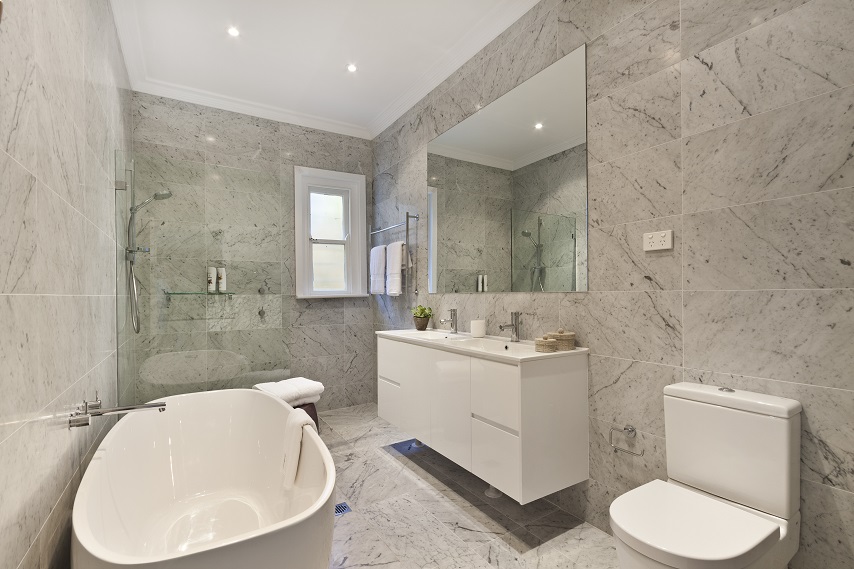Modern homes are now adding value to their bathroom by installing a wet room. Wet rooms are basically shower rooms that do away with the shower screen and tray. It has an open and fully tiled shower area. Anyone can have a wet room and it’s actually recommended for smaller bathrooms to prevent everything from getting wet and sprayed.
Also read – Make Your Bathroom Beautiful with Shower Screens
Installation
Placing and fixing a wet room should be performed by professionals. A ramp or an incline needs to be installed along the floor to connect the shower water into a sewer and then the entire room needs to be waterproofed

Waterproofing
When it comes to waterproofing, wet rooms involves priming the floor and the bottom section of the walls and the wall area around the shower is covered with a syrupy membrane. After that, the room is then tiled. You can raise the bathroom door threshold by about 5 mm from the floor in case the room fills with water. This will keep the water contained and avoid splashes on other areas of the bathroom.
Types of solid surface shower materials
Your next question might be about choosing the right type of solid surface shower material for your wet room. Tiles will always be the first choice to most for wall and floor covering but you can opt for sheet vinyl for the floor, this non-porous material is very low-maintenance. If you’re looking for a luxurious look, then concrete and tadelakt will look good in your bathroom.
Only use floor tiles that are specifically made for bathroom floors so they aren’t slippery. If you are going to use tiles, pick a non-porous bathroom tile like ceramic or porcelain. Make sure if you will go for porous tiles, such as slate, marble, and limestone, you need to be aware that every few months it needs sealing to prevent water damage.
Underfloor heating
If you are curious about installing an underfloor heating, many fitters actually recommend it as it will keep the tiles warm underfoot and it helps to quickly dry out the water on the floor.

Advantages of wet rooms
- Stylish and perfect for creating a contemporary look.
- Acts a second bathroom which increases the value of your home.
- Recommended for a small bathroom- removing the bath creates loads more space.
- Easier to clean because there is no shower screen or tray to worry about.
- It will protect your floor especially the bit under the tiles than it would be in a standard bathroom.
Disadvantages of wet rooms
- For smaller bathrooms, watch out for wet towels and loo roll caused by splashes and spray from the shower.
- Need a professional fitter to waterproof the room because if it is not done properly, leaking water can cause damage.
- It will be costly for a wet room to be tiled from floor to ceiling. If you opt for porous stone tiles, they need to be resealed every few months which can be a bit high-maintenance.
- Buyers want at least one bath because exchanging the main bathroom for a wet room could make your home less saleable.
Before you get a custom home builder to do the job for you, make sure to come up with a complete thought through every element of your wet room scheme. Ensure everything, from shelving to shower fittings and take your time to plan every stage.
